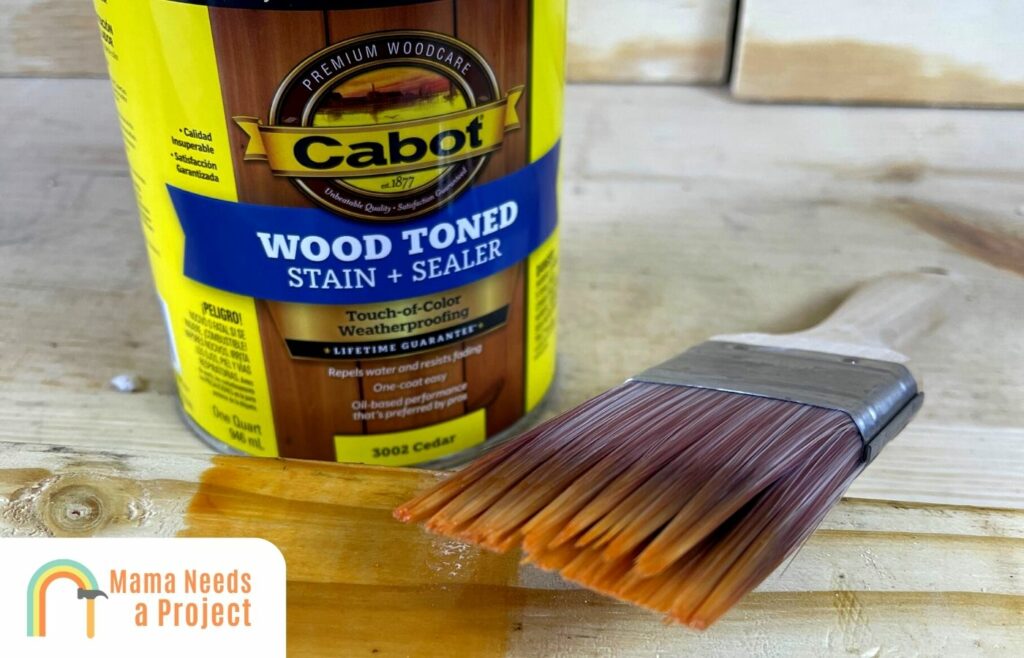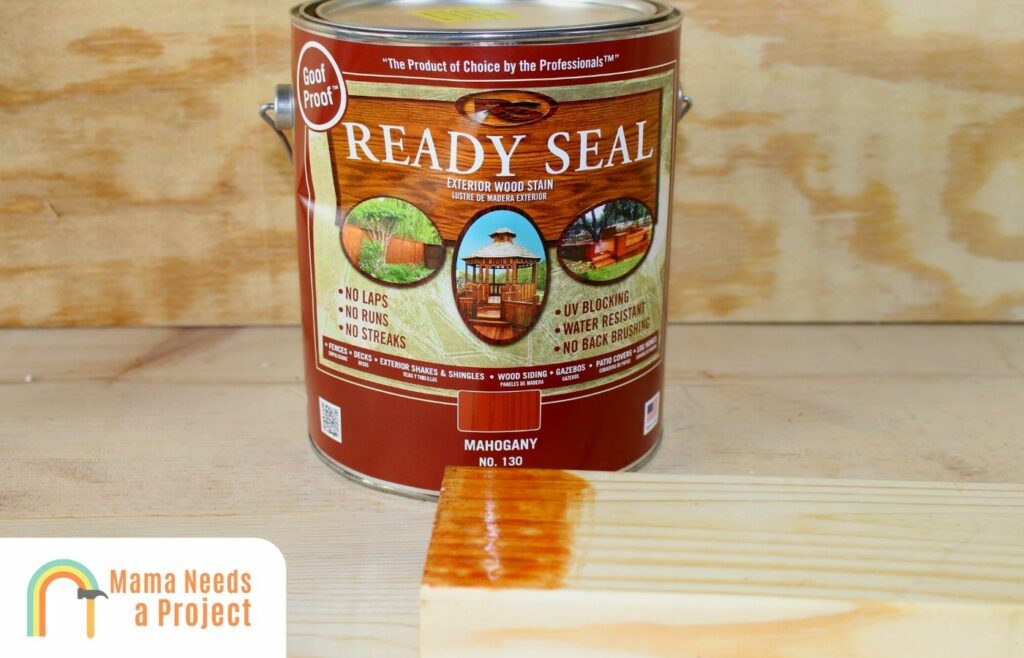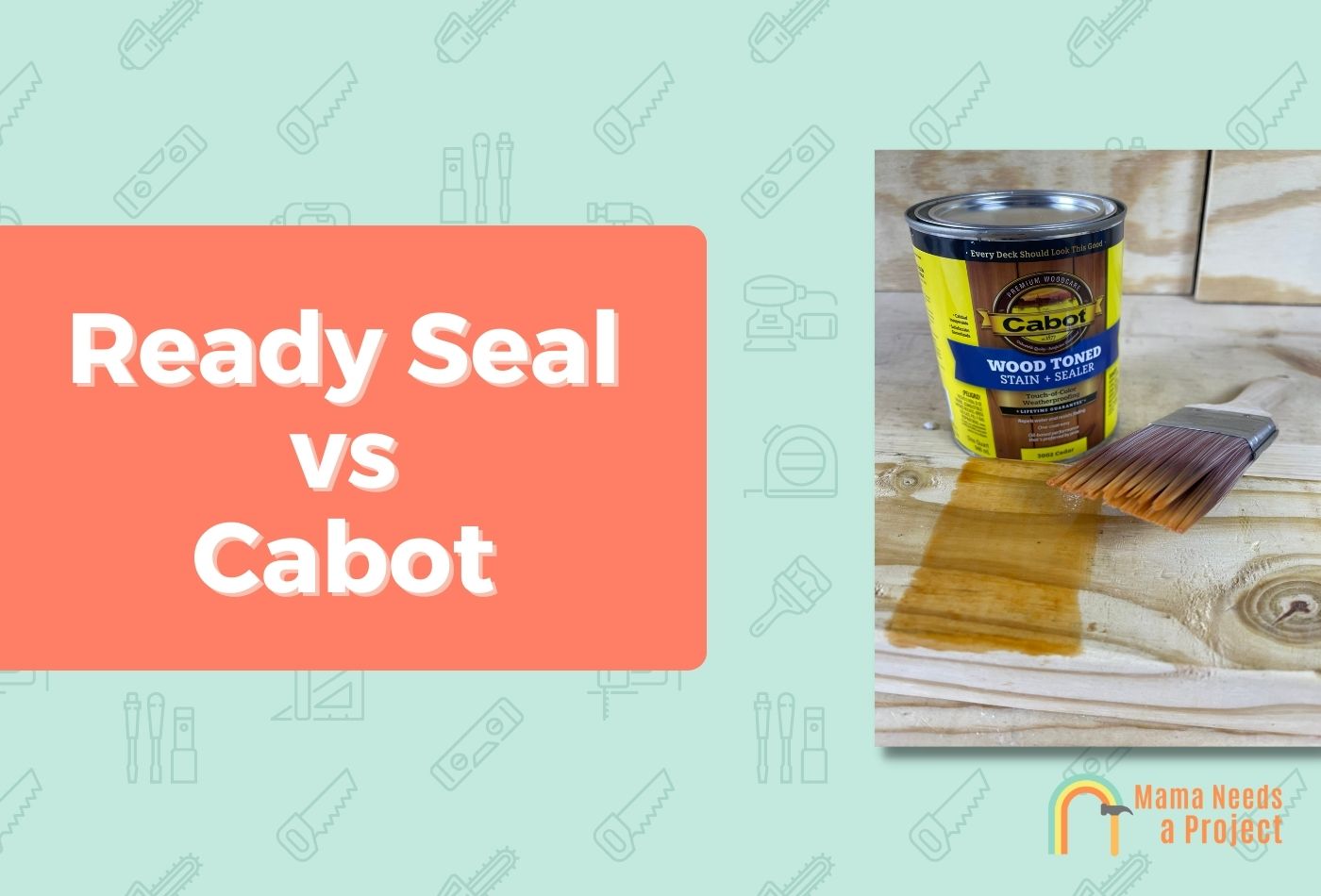Ready Seal vs Cabot: Which is Better? (2024 Guide)
There are many wood stains on the market today, and two of the most commonly used wood stains are Ready Seal and Cabot.
Both are high-quality, reliable products that look fantastic on outdoor furniture and other wood surfaces, but is one better than the other?
In this Ready Seal vs Cabot comparison, I’ll help you decide which stain is best for your project. Let’s dig in!
- Ready Seal and Cabot are both top-of-the-line, semi-transparent stains, but Ready Seal is easier to use because it’s quick-drying, self-leveling, and there’s no wet-lining or back-brushing required.
- Cabot, on the other hand, provides better protection against the elements that can damage wood surfaces outdoors, and only one coat is needed.
Ready Seal vs Cabot
| Preview | Product | |
|---|---|---|

|
Ready Seal 130 1-Gallon Can Mahogany Exterior Wood Stain and Sealer | Check Today’s Price |

|
Cabot Wood Toned Stain + Sealer, Exterior Natural Wood Stain, Cedar, Quart | Check Today’s Price |
Ready Seal vs Cabot: Durability

Ready Seal and Cabot wood stains are durable and long-lasting, but Cabot products do have a slight edge in this category, since they waterproof wood surfaces while making them virtually impervious to even the harshest UV rays.
Especially if you’re using Cabot’s Australian Timber Oil, you can expect superior strength immediately after application, as this is their most durable stain by far.
The main elements that destroy wood surfaces outdoors are moisture, UV rays, pests, mold and mildew, and temperature fluctuations.
Remarkably, Cabot wood stains protect against all of these, and they resist scratches and impact damage too.
But Ready Seal must be given its credit, for it’s not just a wood stain but a sealer too—and a very good one at that!
Ready Seal vs Cabot: Appearance
Without a doubt, wood stain’s appearance is its most important quality.
Usually, wood stain is applied to enhance wood’s natural features, the most important being its grain pattern. And it’s critical that your wood stain complements the wood’s natural colors.
When it comes to appearance, both Ready Seal and Cabot look great on hardwoods and softwoods. But again, Cabot has an edge because it can penetrate deep into wood’s pores, eventually leaving an exquisitely rich finish.
Both are semi-transparent stains with a flat finish, so you don’t have to worry about them being too shiny or slippery.
The only thing about Cabot is it yellows over time, so it shouldn’t be used on light-colored woods, like birch, ash, and beech.
Ready Seal vs Cabot: Ease of Application

In this category, Ready Seal wins—and by a wide margin.
This product is advertised as being “goof-proof” and it truly is. You don’t need to thin before applying, and it doesn’t require any wet-lining or back-brushing.
Cabot, on the other hand, requires a more thorough application, as you really have to get the stain into the wood’s pores to achieve a breathtaking finish.
While it’s true the inexperienced and experienced alike can use both products to great effect, Ready Seal is certainly a better product for the inexperienced because:
- You only need a couple coats.
- It’s quick-drying and self-leveling.
- It can be applied regardless of temperature.
Ready Seal vs Cabot: Toxicity
Ready Seal and Cabot are both oil-based wood stains, and as such they have more volatile organic compounds (VOC).
But Ready Seal is made with less VOC, so it’s the less-toxic of the two.
Regardless of which wood stain you choose—and regardless of how you choose to apply it—you need to wear a respirator, goggles, gloves, pants, and long sleeves to ensure you’re safe during the application process.
Also, you should ensure there’s good ventilation. And when either wood stain is off-gassing, you should stay away for at least 6 hours.
Ready Seal vs Cabot: Versatility
Ready Seal and Cabot are versatile wood stains, but in different ways.
Ready Seal is versatile because it doesn’t have to be thinned before application, so it can be effectively brushed, rolled, or sprayed.
Moreover, it comes in more colors, so it can be used on more woods.
Plus, it can be applied regardless of temperature, i.e. it can be applied year round.
And Ready Seal is not just a stain but a sealer too.
But both stains can be applied to virtually any outdoor wooden furniture, and they’re both great on decks, fences, posts, railings, and other exterior wood surfaces.
Cabot vs Ready Seal: Product Lineup
Here, Cabot beats Ready Seal handily.
Cabot wood stain may only come in five colors, but it can be enhanced by a specialty Cabot sealer and Cabot pre-stain.
Plus, if it’s applied with a Cabot brush or roller, your chances of getting a wonderful finish go up significantly.
Ready Seal, on the other hand, is just one product, albeit a very good one.
Cabot vs Ready Seal: Price
As far as price goes, there’s not much difference between regular Cabot wood stain and Ready Seal.
But Cabot’s Australian Timber Oil is more expensive, as it’s their highest-quality product.
When considering price, you also should consider spreadability and lifespan. Specifically, if the stain is affordable, covers over 100 sq ft, and lasts multiple years, it can be considered cost-effective.
Cabot vs Ready Seal: Warranty
Ready Seal and all of Cabot’s wood stains are backed by a warranty.
However, Cabot’s general warranty is pretty generous. So long as you apply the stain properly, they’ll send you a new product or refund you if you don’t like the results you got.
This is why you should always follow the manufacturer’s directions closely; even a slight divergence from the recommended process can void the warranty.
Are you searching for deck stains for your deck? Check out these best deck stains for old wood decks!
Ready Seal Overview
- Requires no primer. Ready Seal is darkest when first applied. It reaches its true color in approximately 14…
- May be applied using sprayer, roller or brush onto the woods surface.
- Requires no back brushing and will never leave runs, laps, or streaks.
Ready Seal Pros
Easy to Use:
For one, you don’t have to use a primer beforehand, so the application process is shorter. Plus, it doesn’t need to be thinned, even though it’s an oil-based stain. And you won’t have to keep a wet line or do any back-brushing. It really is a “goof-proof” wood stain, so it’s especially good for inexperienced DIYers.
Durable:
Ready Seal stain is a wood stain and sealer all in one, so it doesn’t just beautify wood but protects it as well. Specifically, it’ll protect exterior wood from moisture, UV rays, mold and mildew, pests, scratches, temperature fluctuations, and impact damage. It’s also long-lasting if applied right and maintained annually.
Appealing Colors:
This semi-transparent stain comes in eight colors, with Natural Cedar being most popular. Even though it’s oil-based, it has a flattish sheen, so it can accentuate wood grain and other features. And since it’s a stain and sealer, you won’t have to apply a layer of polyurethane and run the risk of getting a cloudy finish.
Easy to Clean:
Once Ready Seal wood stain is fully cured, it should be cleaned every so often with warm, soapy water. And after you’re done applying it, you should immediately clean off your brushes with mineral spirits. This cleaning agent will also efficiently remove Ready Seal from any surface, which is necessary for re-staining.
Versatile:
Unlike other oil-based stains, Ready Seal can be brushed, rolled, or sprayed on without thinning, and it works well on decks, fences, stairs, posts, railings, and other outdoor wood surfaces. And since there are eight colors available, it works with dark- and light-colored woods. Moreover, it doesn’t yellow over time.
Ready Seal Cons
No Pre-stain Available:
Unfortunately, Ready Seal doesn’t make pre-stain. According to them, however, their wood stain doesn’t need pre-stain to be effective, but I’ve found that pre-stain always helps with achieving a superb finish.
More Toxic:
Since Ready Seal is an oil-based product, it has more VOC. But compared to other oil-based wood stains, it has a minimal amount of VOC. And since it’s more toxic, you need to wear protective gear when applying it.
Cabot Stain Overview
- PROTECT WOOD – Cabot Wood Toned Stain + Sealer is specially formulated with a unique blend of resin and oil to…
- BEAUTIFY – This natural wood sealer seals in and enhances the natural beauty of your outdoor wood projects….
- WATER REPELLANT – As a wood protector for outdoor items, this wood stain is mildew resistant and…
Cabot Pros
Deep Penetrating:
Cabot wood stains penetrate deeper than traditional stains, so they accentuate wood grain and natural colors better. Also, this ability to penetrate deep allows them to form watertight seals. And it doesn’t matter if the wood is soft or hard—Cabot wood stain can penetrate deep into any kind of wood, and quickly too.
Waterproof:
Other wood stains make wood water-resistant, but Cabot’s products can waterproof any wood or wood-based surface. And because they can keep surfaces completely free of moisture, they prevent mold and mildew growth. Cabot stains also resist temperature fluctuations well—especially the Australian Timber Oil.
UV Resistant:
Cabot wood stains resist UV rays better than others, so they stay vibrant for longer. And for an oil-based product, that’s rare and impressive! Cabot Gold, in particular, is specially formulated to be extremely UV-resistant, so it’s ideal for outdoor furniture that gets hours of sunlight daily.
One-Coat Application:
All Cabot stains are one-coat solutions, and in this way they distinguish themselves from most traditional stains. Essentially, all you need to do is apply one thick coat. But of course, you can’t over-apply, because the stain won’t dry properly. Since these are one-coat stains, it doesn’t take as long to apply them.
Variety of Products:
Cabot manufactures pre-stains, sealers, and applicators too, but their wood stains are their most sought-after products. They sell three kinds: Australian Timber Oil, Cabot Gold, and Cabot Semi-Transparent Stain. The Australian Timber Oil is probably their best product, as it’s the most visually appealing and arguably the strongest.
Generous Warranty:
Unlike other wood stain manufacturers, Cabot backs their products with a pretty generous warranty. Essentially, if you don’t like how the finish looks after a certain amount of time has passed, they’ll either send you new stain or refund you. Of course, you have to apply the stain properly to use the warranty.
Cabot Cons
Requires Wet-Lining & Back-Brushing:
Since Cabot stains are more viscous, you’ll need to wet-line and back-brush to achieve the best possible results. The good news, however, is this semi-transparent stain doesn’t dry rapidly, so wet-lining isn’t difficult. But back-brushing can be tedious, especially if you have to coat a large, new-wood surface.
Less Color Options:
The main Cabot wood stains come in five colors, and this is their biggest drawback. Because there are only five colors available, these wood stains only complement the most commonly used woods. For example, if you want to stain something rare and unique, like Brazilian rosewood, you’ll probably need another stain.
Need help staining your deck? Check out the video below!
Final Verdict
In the end, you can’t go wrong with either Ready Seal or Cabot wood stain, since both products beautifully highlight natural wood grain and strengthen all kinds of wood surfaces.
But if an easy-to-use, versatile product with more colors to choose from is what you’re after, go with Ready Seal.
And if you want a deep-penetrating, single-coat solution that’ll keep out water and prevent UV damage, choose any of the Cabot stains.
Ready to purchase your stain? Check out my deck stain calculator for help determining how much to buy!

